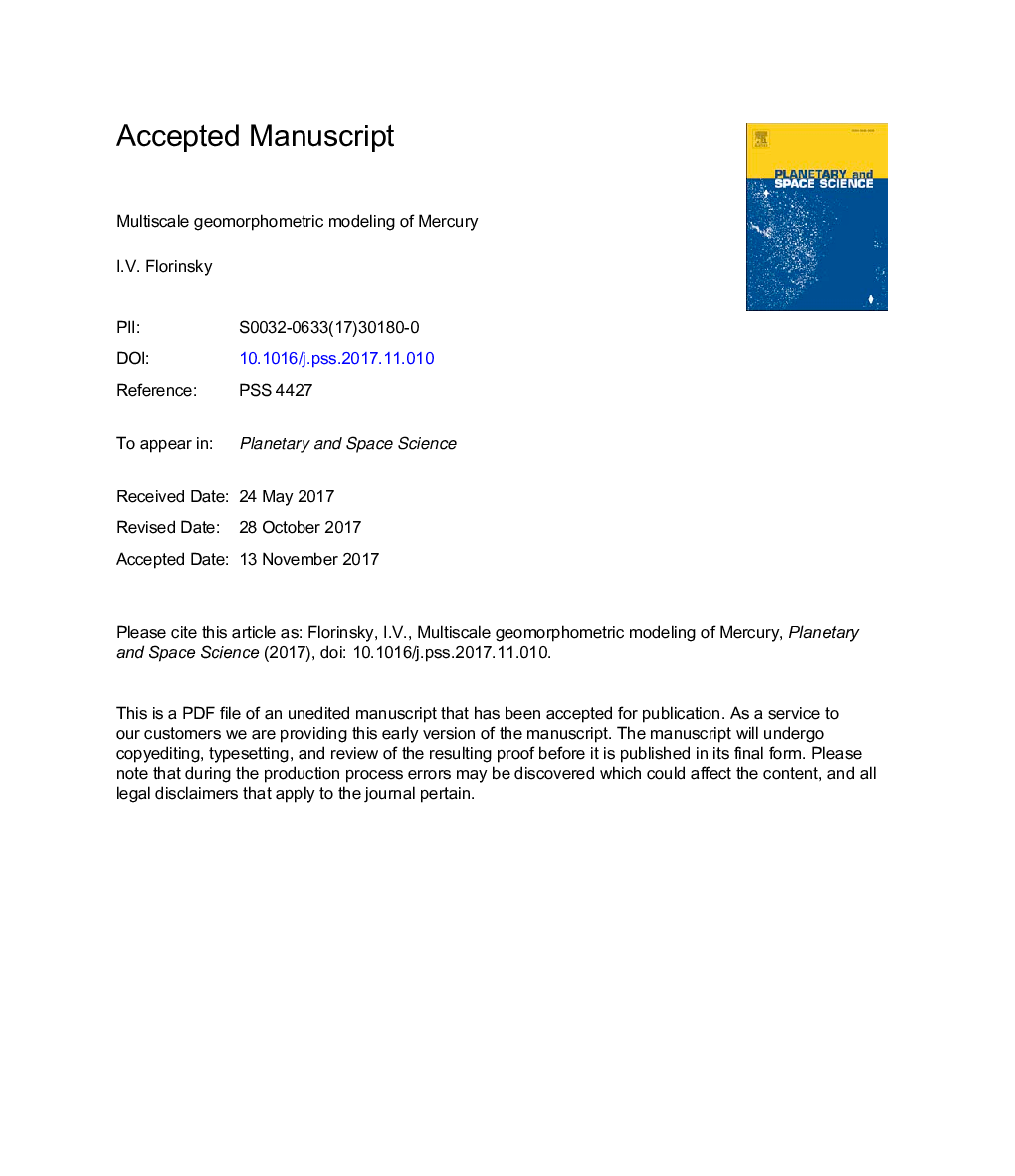| Article ID | Journal | Published Year | Pages | File Type |
|---|---|---|---|---|
| 8142411 | Planetary and Space Science | 2018 | 43 Pages |
Abstract
Topography is one of the key characteristics of a planetary body. Geomorphometry deals with quantitative modeling and analysis of the topographic surface and relationships between topography and other natural components of landscapes. The surface of Mercury is systematically studied by interpretation of images acquired during the MErcury Surface, Space ENvironment, GEochemistry, and Ranging (MESSENGER) mission. However, the Mercurian surface is still little explored by methods of geomorphometry. In this paper, we evaluate the Mercury MESSENGER Global DEM MSGR_DEM_USG_SC_I_V02 - a global digital elevation model (DEM) of Mercury with the resolution of 0.015625° - as a source for geomorphometric modeling of this planet. The study was performed at three spatial scales: the global, regional (the Caloris basin), and local (the Pantheon Fossae area) ones. As the initial data, we used three DEMs of these areas with resolutions of 0.25°, 0.0625°, and 0.015625°, correspondingly. The DEMs were extracted from the MESSENGER Global DEM. From the DEMs, we derived digital models of several fundamental morphometric variables, such as: slope gradient, horizontal curvature, vertical curvature, minimal curvature, maximal curvature, catchment area, and dispersive area. The morphometric maps obtained represent peculiarities of the Mercurian topography in different ways, according to the physical and mathematical sense of a particular variable. Geomorphometric models are a rich source of information on the Mercurian surface. These data can be utilized to study evolution and internal structure of the planet, for example, to visualize and quantify regional topographic differences as well as to refine geological boundaries.
Related Topics
Physical Sciences and Engineering
Earth and Planetary Sciences
Geophysics
Authors
I.V. Florinsky,
